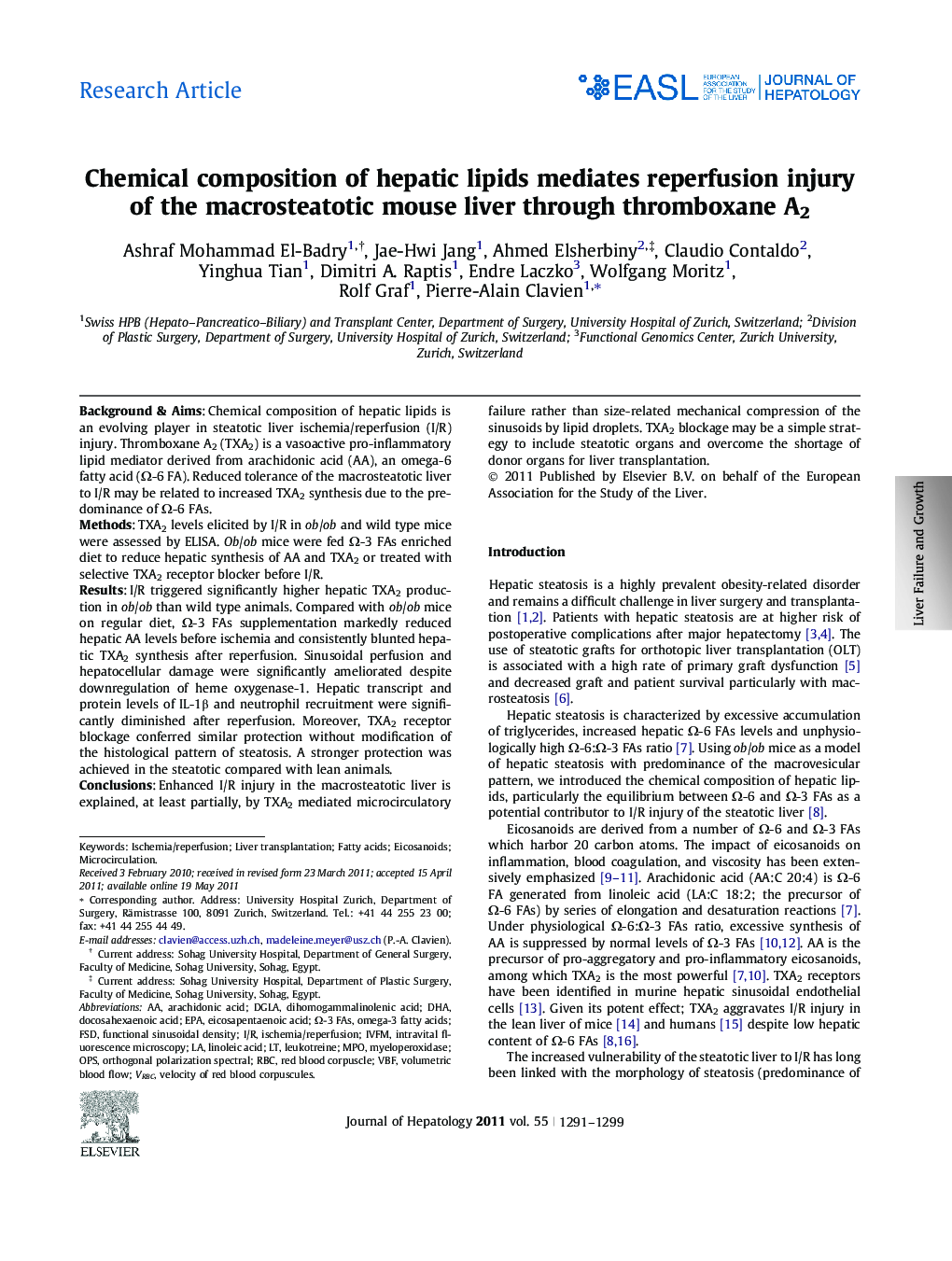| Article ID | Journal | Published Year | Pages | File Type |
|---|---|---|---|---|
| 6106434 | Journal of Hepatology | 2011 | 9 Pages |
Background & AimsChemical composition of hepatic lipids is an evolving player in steatotic liver ischemia/reperfusion (I/R) injury. Thromboxane A2 (TXA2) is a vasoactive pro-inflammatory lipid mediator derived from arachidonic acid (AA), an omega-6 fatty acid (Ω-6 FA). Reduced tolerance of the macrosteatotic liver to I/R may be related to increased TXA2 synthesis due to the predominance of Ω-6 FAs.MethodsTXA2 levels elicited by I/R in ob/ob and wild type mice were assessed by ELISA. Ob/ob mice were fed Ω-3 FAs enriched diet to reduce hepatic synthesis of AA and TXA2 or treated with selective TXA2 receptor blocker before I/R.ResultsI/R triggered significantly higher hepatic TXA2 production in ob/ob than wild type animals. Compared with ob/ob mice on regular diet, Ω-3 FAs supplementation markedly reduced hepatic AA levels before ischemia and consistently blunted hepatic TXA2 synthesis after reperfusion. Sinusoidal perfusion and hepatocellular damage were significantly ameliorated despite downregulation of heme oxygenase-1. Hepatic transcript and protein levels of IL-1β and neutrophil recruitment were significantly diminished after reperfusion. Moreover, TXA2 receptor blockage conferred similar protection without modification of the histological pattern of steatosis. A stronger protection was achieved in the steatotic compared with lean animals.ConclusionsEnhanced I/R injury in the macrosteatotic liver is explained, at least partially, by TXA2 mediated microcirculatory failure rather than size-related mechanical compression of the sinusoids by lipid droplets. TXA2 blockage may be a simple strategy to include steatotic organs and overcome the shortage of donor organs for liver transplantation.
